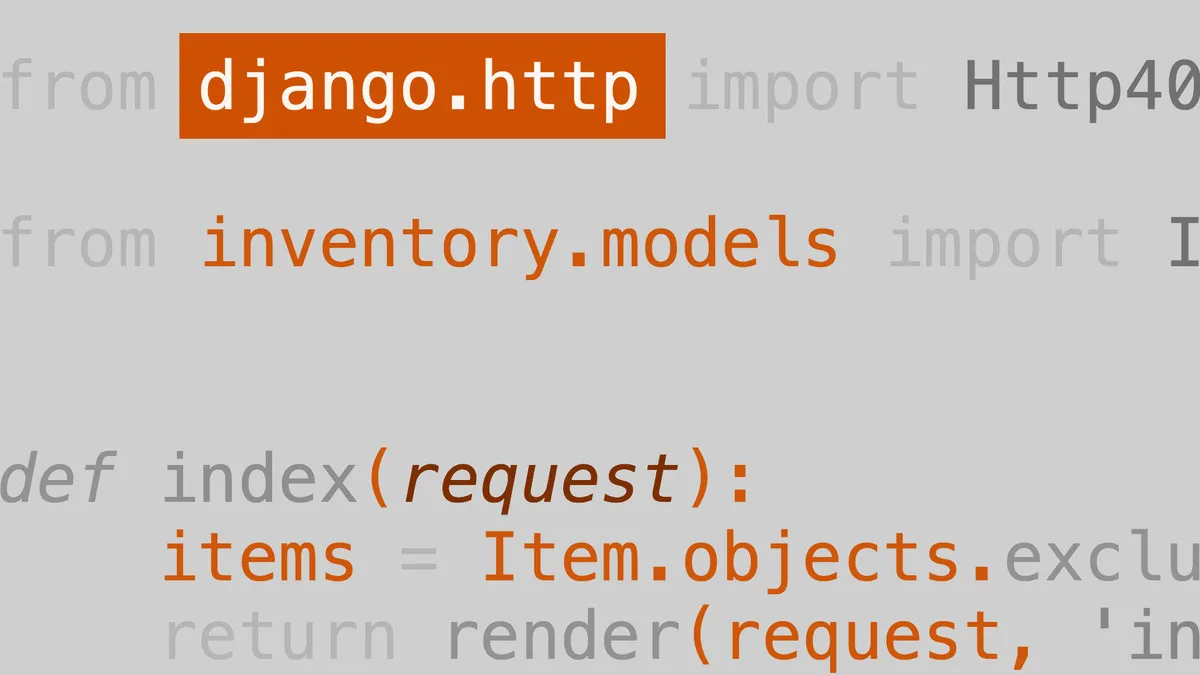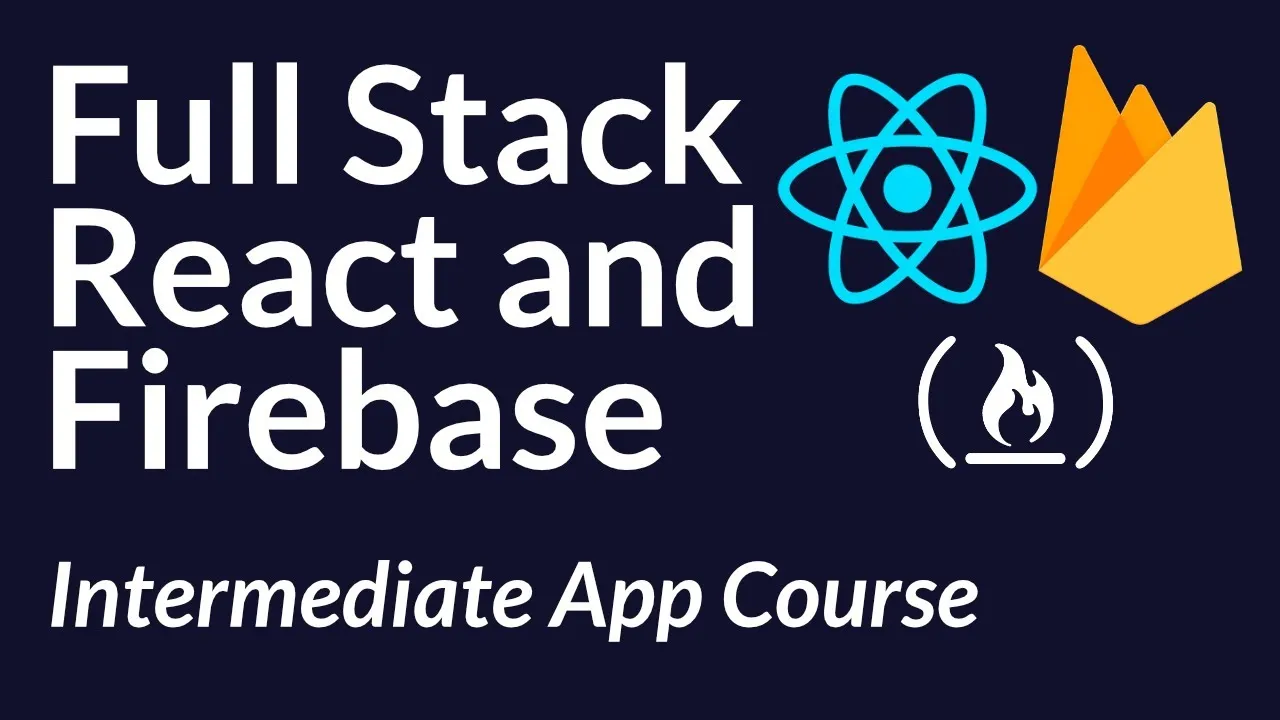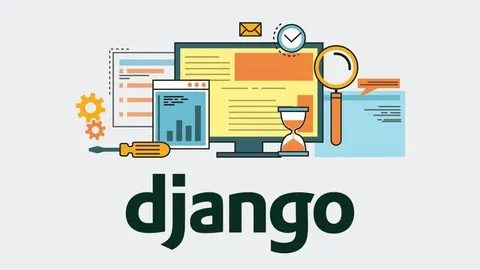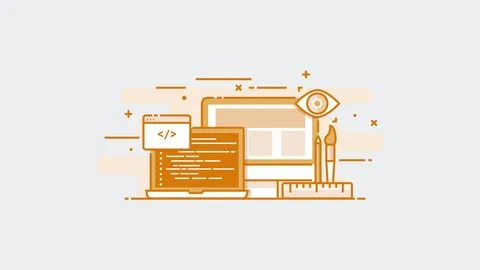
Learning Django 
Django, the Python framework, enables developers to quickly create data-driven web applications. This tutorial provides an introduction to the framework, guiding users through the process of taking a project from concept to launch. ▼
ADVERTISEMENT
Course Feature
![]() Cost:
Cost:
Free Trial
![]() Provider:
Provider:
LinkedIn Learning
![]() Certificate:
Certificate:
No Information
![]() Language:
Language:
English
![]() Start Date:
Start Date:
Self Paced
Course Overview
❗The content presented here is sourced directly from LinkedIn Learning platform. For comprehensive course details, including enrollment information, simply click on the 'Go to class' link on our website.
Updated in [March 06th, 2023]
1. Understanding the Django Framework: Learners can gain an understanding of the Django framework and its components, such as the Model-View-Template (MVT) architecture, the Django ORM, and the Django admin interface. They will also learn how to create a brand-new Django project, define a data model and fields, query the database, and use Django's built-in URL handlers, views, and templates to structure the rest of the backend.
2. Developing Web Applications: Learners can learn how to develop web applications using Django. They will learn how to create models, views, and templates, as well as how to use the Django ORM to query the database. They will also learn how to use the Django admin interface to manage their applications.
3. Enhancing User Experience: Learners can learn how to incorporate CSS and JavaScript to enhance the style and usability of their Django templates. They will also learn how to use AJAX and jQuery to create dynamic web applications.
4. Deployment and Maintenance: Learners can learn how to deploy and maintain their Django applications. They will learn how to use version control systems such as Git and how to use deployment tools such as Heroku and AWS. They will also learn how to use Django's built-in security features to protect their applications.
5. Troubleshooting and Debugging: Learners can learn how to troubleshoot and debug their Django applications. They will learn how to use the Django debug toolbar and how to use the Django logging system to track errors and debug their applications.
[Applications]
After completing this course, learners can apply their knowledge of Django to create web applications. They can use Django to create a data model and fields, query the database, and use Django's built-in URL handlers, views, and templates to structure the backend. Learners can also use CSS and JavaScript to enhance the style and usability of their Django templates. Additionally, learners can use Django to create APIs and web services.
[Career Paths]
1. Web Developer: Web developers use Django to create dynamic websites and web applications. They are responsible for designing, coding, testing, and maintaining websites and web applications. Web developers must have a strong understanding of HTML, CSS, JavaScript, and other web development technologies. They must also be familiar with the Django framework and be able to use it to create efficient and secure web applications.
2. Database Administrator: Database administrators use Django to manage and maintain databases. They are responsible for designing, implementing, and maintaining databases, as well as ensuring the security and integrity of the data. Database administrators must have a strong understanding of database technologies, such as SQL, and be familiar with the Django framework.
3. Data Scientist: Data scientists use Django to analyze and interpret data. They are responsible for collecting, cleaning, and analyzing data, as well as creating data models and visualizations. Data scientists must have a strong understanding of data analysis techniques, such as machine learning, and be familiar with the Django framework.
4. DevOps Engineer: DevOps engineers use Django to automate the deployment and management of web applications. They are responsible for designing, implementing, and maintaining the infrastructure and tools needed to deploy and manage web applications. DevOps engineers must have a strong understanding of DevOps tools and be familiar with the Django framework.
[Education Paths]
1. Bachelor of Science in Computer Science: This degree path provides students with a comprehensive understanding of computer science fundamentals, such as programming, software engineering, and computer architecture. It also covers topics such as artificial intelligence, machine learning, and data science. This degree path is ideal for those looking to develop a career in web development, as it provides the necessary skills to create and maintain web applications using Django.
2. Master of Science in Web Development: This degree path focuses on the development of web applications and websites using Django. It covers topics such as web design, web development, database management, and web security. This degree path is ideal for those looking to specialize in web development and create complex web applications using Django.
3. Master of Science in Data Science: This degree path focuses on the analysis and interpretation of data using Django. It covers topics such as data mining, machine learning, and data visualization. This degree path is ideal for those looking to specialize in data science and create complex data-driven applications using Django.
4. Master of Science in Artificial Intelligence: This degree path focuses on the development of artificial intelligence applications using Django. It covers topics such as natural language processing, computer vision, and robotics. This degree path is ideal for those looking to specialize in artificial intelligence and create complex AI-driven applications using Django.
Course Syllabus
Introduction
Rapidly create web applications
What you should know
GitHub and the exercise files
Course Provider

Provider LinkedIn Learning's Stats at AZClass
Discussion and Reviews
0.0 (Based on 0 reviews)
Explore Similar Online Courses

Full Stack React & Firebase Tutorial - Build a social media app

Demystifying Mindfulness

Python for Informatics: Exploring Information

Social Network Analysis

Introduction to Systematic Review and Meta-Analysis

The Analytics Edge

DCO042 - Python For Informatics

Causal Diagrams: Draw Your Assumptions Before Your Conclusions

Whole genome sequencing of bacterial genomes - tools and applications

Django 22 & Python The Ultimate Web Development Bootcamp

Complete Python Django Single-Page App

Django Takeoff: Developing Modern Applications
 Related Categories
Related Categories
Quiz
 Submitted Sucessfully
Submitted Sucessfully
1. What is Django?
2. What is the main purpose of Django?
3. What is the main language used in Django?


Start your review of Learning Django